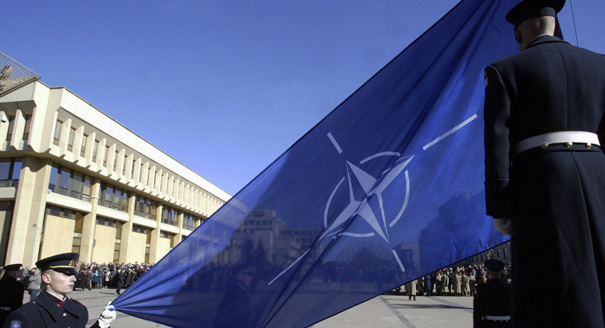Since the end of the Cold War, NATO allies have harvested the peace dividend and reduced their classical territorial defense. In this period, Western societies have grown accustomed to peace and prosperity, as they have prioritized schools over arms, trade over embargoes. Russia’s aggression against Ukraine and its ambition to revive a Cold War conflict have been stark reminders that the West needs to protect its societies and values against tyranny and oppression.
Those in the West should hold no illusions about Russia’s intentions and willingness to apply raw force. Russian President Vladimir Putin’s new doctrine preserves the right to intervene in other countries to protect what the Kremlin considers the interests of Russian-speaking communities. Countries bordering Russia can either choose to join Russia’s so-called sphere of interest or risk military occupation if they opt for stronger ties with NATO and the EU—as seen in Georgia, Moldova, and Ukraine.
Russia is a country in social and economic decline, but since 2008 it has spent fortunes on modernizing its military and is now capable of turning a major military exercise into an offensive attack within a few hours. That is a situation that has created many concerns in Russia’s neighboring countries, not least in the Baltic states.
It is regrettable that the West’s relationship with Russia has turned dangerous and competitive, but the phase of mourning the deterioration of NATO-Russia relations is over. NATO now has to face the new security environment imposed by Russia and focus more on deterrence and defense. The West cannot afford to stand idly by. Inaction would be interpreted by the Kremlin as an open invitation for Russia to continue its assertive policies toward NATO members and partners—in the Baltics, the Caucasus, and Eastern Europe.
Because of Russia’s assertive behavior, NATO is now preparing for a new reality on the ground. In recent years, the alliance has reached a turning point with regard to military spending. In Central Europe alone, spending was up 13 percent in 2015, and the United States has sent an important message with its decision to quadruple the U.S. defense budget for Europe in 2017. The UK, France, and Germany have all announced plans for modest spending increases in the coming years. In total this will help deter Russian aggression.
But more should be done. The 2010 NATO Strategic Concept defined three core tasks: territorial defense, crisis management, and cooperative security. Russia’s aggression against Ukraine has dramatically changed the security environment in Europe. That’s why NATO decided to create a spearhead force—a very rapid reaction unit that can be deployed within a few hours to defend any ally that is attacked. Furthermore, NATO decided to rotate military forces in its Eastern allies on a permanent basis. These were immediate and necessary steps, but they are unlikely to be sufficient.
Perhaps the West should establish a more permanent presence in Eastern Europe, for as long as necessary. Rotating military forces is a step in the right direction, but one could question whether NATO’s military bases would be of greater use in the Eastern than the Western part of Europe.
The key question is: Can the present NATO deployment prevent a Russian attack on allies that border Russia? This is uncertain, and it would take a huge number of resources to liberate the alliance’s Eastern European and Baltic members again after such an attack. As is always the case, prevention is less expensive and more effective than treatment.
Some might argue that a greater NATO presence in Eastern Europe would violate the 1997 NATO-Russia Founding Act, which states that “the Alliance will carry out its collective defense and other missions by ensuring the necessary interoperability, integration, and capability for reinforcement rather than by additional permanent stationing of substantial combat forces.”
But the same opponents should recall that the act also says “in the current and foreseeable security environment,” and that environment has dramatically changed because of Russia’s actions in Ukraine. So the conclusion is clear: it wouldn’t violate the Founding Act to deploy—for as long as necessary—combat forces on the Eastern flank sufficient to deter any attack on NATO allies.
Territorial defense is important but not sufficient if the West is to effectively counter Russia’s hybrid warfare. At their July 2016 summit in Warsaw, NATO allies should therefore revive some of the Cold War instruments to counter Russian propaganda—and apply new types of communication in a more sophisticated way.
The Warsaw summit should also signal strong support for NATO partners bordering Russia and should stress that every nation is free to choose its own alliances. Any gradual normalization with Russia starts with Ukraine. A lack of Russian compliance with the Minsk agreement aimed at ending the conflict in eastern Ukraine would further destabilize the country and encourage Putin to pursue a similar strategy elsewhere.
Russia will play a long game, and NATO allies and partners in cooperation with the EU and key international players should be ready to do the same thing. In this endeavor, NATO needs to use the full spectrum of tools at its disposal to create effective deterrence, in defense of a Europe whole and free.
Anders Fogh Rasmussen is the founder and chairman of Rasmussen Global. He is a former prime minister of Denmark and a former secretary general of NATO.








